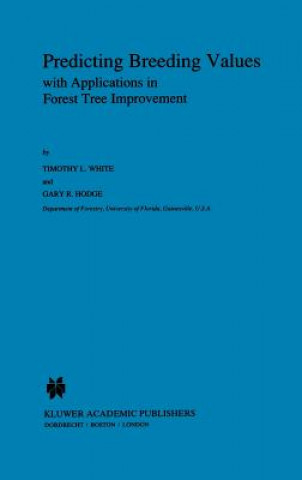
Kód: 01392774
Predicting Breeding Values with Applications in Forest Tree Improvement
Autor T.L. White, G.R. Hodge
In most breeding programs of plant and animal species, genetic data (such as data from field progeny tests) are used to rank parents and help choose candidates for selection. In general, all selection processes first rank the cand ... celý popis
- Jazyk:
 Angličtina
Angličtina - Väzba: Pevná
- Počet strán: 367
Nakladateľ: Springer
- Viac informácií o knihe

277.94 €

Skladom u dodávateľa v malom množstve
Odosielame za 12 - 17 dní
Potrebujete viac kusov?Ak máte záujem o viac kusov, preverte, prosím, najprv dostupnosť titulu na našej zákazníckej podpore.
Pridať medzi želanie
Mohlo by sa vám tiež páčiť
-

Issues of Governance and International Investment and Multinational Enterprises
22.78 € -

Handbook of Modernism Studies
215.41 € -

John Pisano's Jazz Guitar Comping Masterclass
25.15 € -

Die Mindestreserve: Ausgestaltung und Wandlungen eines Instrumentes der deutschen Zentralbank seit 1948.
89.63 € -

ministeps: Alles, was Räder hat
12.93 € -4 % -

Der Sommer ohne Männer
19.50 € -4 %
Darujte túto knihu ešte dnes
- Objednajte knihu a vyberte Zaslať ako darček.
- Obratom obdržíte darovací poukaz na knihu, ktorý môžete ihneď odovzdať obdarovanému.
- Knihu zašleme na adresu obdarovaného, o nič sa nestaráte.
Viac informácií o knihe Predicting Breeding Values with Applications in Forest Tree Improvement
Nákupom získate 685 bodov
 Anotácia knihy
Anotácia knihy
In most breeding programs of plant and animal species, genetic data (such as data from field progeny tests) are used to rank parents and help choose candidates for selection. In general, all selection processes first rank the candidates using some function of the observed data and then choose as the selected portion those candidates with the largest (or smallest) values of that function. To make maximum progress from selection, it is necessary to use a function of the data that results in the candidates being ranked as closely as possible to the true (but always unknown) ranking. Very often the observed data on various candidates are messy and unbalanced and this complicates the process of developing precise and accurate rankings. For example, for any given candidate, there may be data on that candidate and its siblings growing in several field tests of different ages. Also, there may be performance data on siblings, ancestors or other relatives from greenhouse, laboratory or other field tests. In addition, data on different candidates may differ drastically in terms of quality and quantity available and may come from varied relatives. Genetic improvement programs which make most effective use of these varied, messy, unbalanced and ancestral data will maximize progress from all stages of selection. In this regard, there are two analytical techniques, best linear prediction (BLP) and best linear unbiased prediction (BLUP), which are quite well-suited to predicting genetic values from a wide variety of sources, ages, qualities and quantities of data.
 Parametre knihy
Parametre knihy
Zaradenie knihy Knihy po anglicky Mathematics & science Biology, life sciences Life sciences: general issues
277.94 €
- Celý názov: Predicting Breeding Values with Applications in Forest Tree Improvement
- Autor: T.L. White, G.R. Hodge
- Jazyk:
 Angličtina
Angličtina - Väzba: Pevná
- Počet strán: 367
- EAN: 9780792304609
- ISBN: 0792304608
- ID: 01392774
- Nakladateľ: Springer
- Hmotnosť: 1590 g
- Rozmery: 234 × 156 × 25 mm
Obľúbené z iného súdka
-

Stealing Fire
12.31 € -23 % -

Greatest Show on Earth
11.18 € -23 % -

The Extended Phenotype
12.93 € -19 % -

Evolution
28.95 € -8 % -

Ways of Attending
26.17 € -

The Molecule of More
16.52 € -23 % -

Sapiens
21.55 € -

Power of Habit
12.11 € -24 % -

Undoing Project
11.08 € -14 % -

Into the Magic Shop
20.01 € -

It Was Snowing Butterflies
3.58 € -24 % -

Brain
11.69 € -22 % -
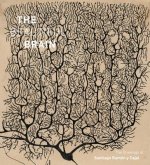
Beautiful Brain
40.65 € -20 % -

The Selfish Gene
12.31 € -23 % -

Cosmic Serpent
10.36 € -29 % -

Speculations on the Evolution of Human Intelligence
9.74 € -7 % -

Homo Deus
11.39 € -21 % -

Biology of Belief
17.75 € -23 % -

Story Genius
14.26 € -23 % -

Descartes' Error
14.47 € -23 % -

Life on Earth
27.51 € -23 % -
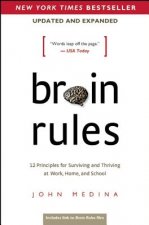
Brain Rules (Updated and Expanded)
16.62 € -4 % -
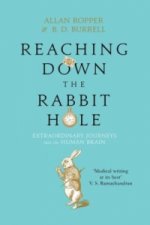
Reaching Down the Rabbit Hole
10.98 € -24 % -

Hidden History of the Human Race
14.06 € -19 % -

Science of Meditation
11.08 € -23 % -

Neuroaffective Picture Book 2
44.96 € -

Head Strong
24.12 € -16 % -

Affective Neuroscience
98.56 € -

Wisdom of Psychopaths
15.08 € -22 % -

Genetics
103.18 € -

Kew Tropical Plant Identification Handbook, The
22.07 € -23 % -

The Storytelling Animal
16.73 € -18 % -

Brain's Way of Healing
12.31 € -23 % -
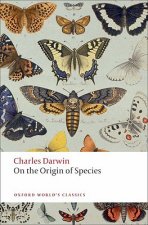
On the Origin of Species
9.33 € -22 % -
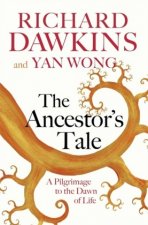
Ancestor's Tale
15.19 € -22 % -

Manual of Percutaneous Coronary Interventions
100.82 € -10 % -

Incognito
17.96 € -8 % -

Incredible Unlikeliness of Being
14.47 € -23 % -

Plant Ecology
71.35 € -

Touch
12.31 € -23 % -
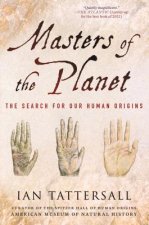
Masters of the Planet
16.21 € -21 % -

Future Humans
29.36 € -
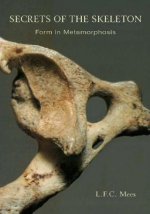
Secrets of the Skeleton
23.71 € -
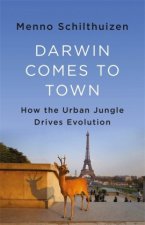
Darwin Comes to Town
13.24 € -24 % -

Once We All Had Gills
44.96 € -

Zooarchaeology and Modern Human Origins
121.97 € -

Tree of Life
54.10 € -

Shape of Life
65.09 € -

Cradle of Humanity
50.82 €
Osobný odber Bratislava a 2642 dalších
Copyright ©2008-24 najlacnejsie-knihy.sk Všetky práva vyhradenéSúkromieCookies


 21 miliónov titulov
21 miliónov titulov Vrátenie do mesiaca
Vrátenie do mesiaca 02/210 210 99 (8-15.30h)
02/210 210 99 (8-15.30h)